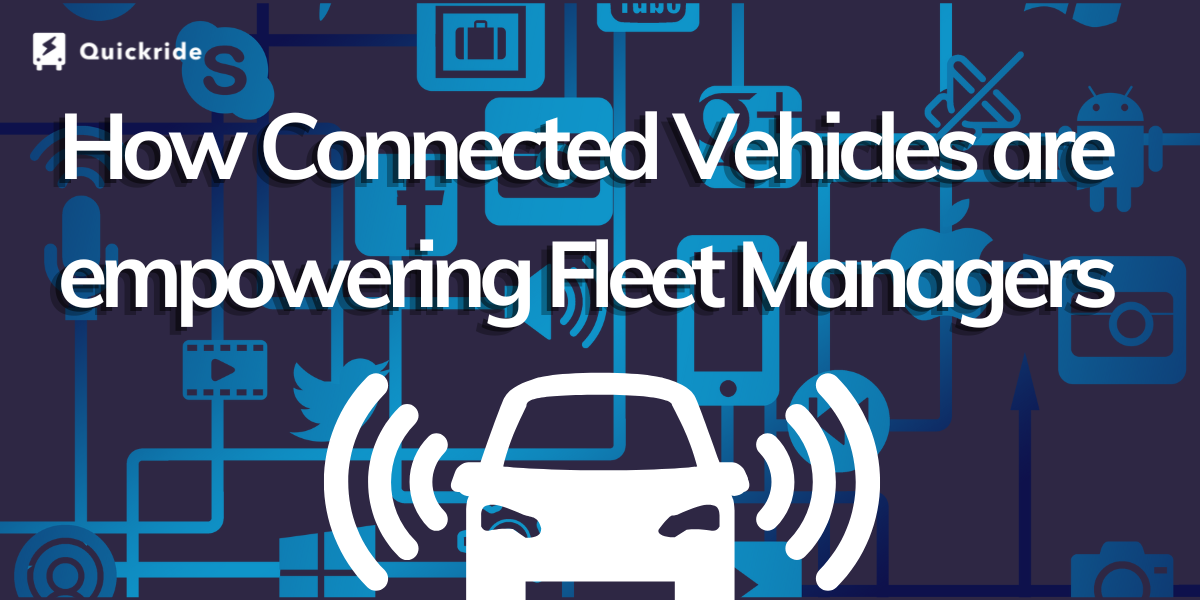
Disruption is happening. That’s undeniable, but some disruptions are bigger than others. We’re sure that you’ve heard of the on-demand economy, autonomous transportation, and electric vehicles. Technologies continue to emerge at a rapid pace and each one is bringing us closer to a future where shared mobility may be more prevalent than ownership. Autonomous shuttles, fleet management tools, and electric charging stations are just a few options that might define the near future of logistics and transportation. But today, one of these technologies stands out…Connected Vehicles.
What is a Connected Vehicle?
We've all seen the headlines about connected vehicles: they're going to revolutionize transportation and make our commutes easier, faster, and more efficient. But what does that mean for you? How can you prepare your company for a future with connected vehicles?
A connected vehicle is one that shares information with its surroundings, including other cars on the road, infrastructure like traffic lights and stop signs, and even the inside of your vehicle itself, sometimes called telematics. This means that as soon as you get into your car, it knows where you're going—and so does everyone else who wants to get there first!
How can my company prepare for this future?
You might be asking yourself how in the world you can prepare for something like this. Well, there are some simple steps that can help you get started:
- Make sure all of your employees are familiar with the technology so they'll be able to use it when needed. This includes learning how to use an app or website so customers can order rides from your company.
- Invest in new vehicles that are compatible with connected car technology so potential customers know what kind of service they'll be getting from you if they choose you as their transportation provider.
- Create a marketing plan that focuses on educating potential customers about the benefits of connected cars and how they can use them.
- Make sure your website is up to date with the latest information about this technology so people can learn more about what it means for them.
How will it impact dealerships?
Connected Vehicles are changing the way we drive, and they're going to change the way we do business too.
Connected vehicles are already being used to improve the customer experience, but as this technology evolves, it will also be used for other purposes.
One of the first things that come to mind when you think about connected vehicles is how they affect the driver. Connected vehicles allow for real-time monitoring and maintenance tracking, which means that fleets can be operated more efficiently and productively. They also enable fleet managers to reduce costs by reducing fuel consumption and minimizing downtime caused by breakdowns.
Fleet managers can also view important information such as:
- Fuel levels and mileage covered
- Vehicle location and direction it’s traveling in/to.
- Engine performance data including engine temperature, oil pressure, coolant temperature and battery voltage levels.
- The ability to view this information in real-time means that drivers can be alerted to potential problems before they occur. This helps to reduce downtime and save money by allowing fleets to operate more efficiently.
 Conclusion
Conclusion
Fleet managers are already feeling the effects of connected vehicles, but what does it mean for you?
Connected vehicles are changing the way we think about transportation. And as this technology becomes more prevalent, it's important that you take steps to prepare for a future with connected vehicles in your dealership.
At Quickride, we believe that the best way to prepare for the future is to be proactive. That's why we work with our dealerships to integrate our app into their current operations. This way, you can offer your customers an on-demand shuttle service or vehicle pickup and delivery capabilities without having to make any major changes to your business model!
Whether you're looking to improve efficiency or provide better customer service, Quickride has got you covered!
